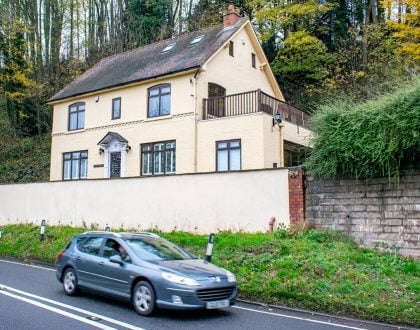Reducing Noise Pollution: A Guide to Soundproofing Your Windows

Reducing Noise Pollution: A Guide to Soundproofing Your Windows
Noise pollution can significantly impact quality of life, affecting sleep, concentration, and overall well-being. For homeowners, particularly those with traditional sash windows, finding effective soundproofing solutions is essential. This article explores practical methods to reduce external noise, focusing on window upgrades and enhancements.
Understanding Window Soundproofing
Windows are often the primary entry points for external noise. Soundproofing windows involves adding materials or modifications that hinder sound waves from passing through. The effectiveness of these measures depends on factors such as glass thickness, air gaps, and overall window construction.
Recommended Noise Levels in a Residential Property
To create a comfortable living environment, noise levels should be kept within recommended limits:
- Bedroom: 30dB
- Living Room: 35dB
For comparison:
- Single glazed windows typically perform between 28-30dB.
- Secondary glazing can reduce noise levels by up to 51dB.
Glass Thickness and Soundproofing
Varying glass thicknesses between the primary and secondary glazing is crucial. If both panes are the same thickness, they will transmit sound waves at the same frequency, creating a coincidence drop, where noise is not adequately reduced. To avoid this, secondary glazing should always have a different glass thickness from the primary window.
Installing Acoustic Glass Secondary Glazing
Secondary glazing involves adding an extra pane inside the existing window frame, creating an insulating air layer. This solution is particularly beneficial for listed buildings or properties in conservation areas where replacing original windows is not permitted. The additional glass layer significantly reduces noise, making secondary glazing one of the most effective soundproofing methods available.
Draught-Proofing for Noise Reduction
While primarily aimed at improving energy efficiency, draught-proofing can also help minimise noise intrusion. Sealing gaps around window frames prevents air (and sound) from leaking through. Simple measures such as applying self-adhesive draught strips or using sealant can make a noticeable difference.
Additional Measures for Noise Reduction
Beyond window-specific solutions, other strategies can further improve a home’s acoustic insulation:
- Window Seals – Over time, seals on windows can deteriorate, reducing their effectiveness. Replacing them can improve both energy efficiency and soundproofing.
- Acoustic Caulk – Poorly installed windows may have micro gaps around the frame that allow sound to enter. Applying acoustic caulk around the edges helps seal these gaps. If sound leakage is a persistent issue, professional window installation may be necessary.
- Shutters and Curtains – Solid wooden shutters can significantly reduce traffic noise. For additional insulation, heavy soundproof curtains can be used alongside blinds for maximum noise reduction.
Why Secondary Glazing is the Most Effective Soundproofing Solution
When it comes to sound insulation, secondary glazing stands out as the most effective solution available today. If external noise is a persistent nuisance, secondary glazing installation provides the best means of creating a quieter, more peaceful home.
Conclusion
Reducing noise pollution requires a combination of soundproofing strategies. Upgrading to acoustic glass, installing secondary glazing, and implementing draught-proofing can significantly improve a home’s acoustic insulation.
Clearview’s secondary glazing solutions are tailored to meet homeowners’ specific needs, offering a range of glass types, including acoustic glass in various thicknesses. Our products can reduce noise levels by up to 80%, providing a quieter and more comfortable home environment.
Recommended Posts

A Quick Guide to Sound Proofing Windows
15/01/2020


